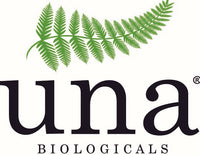
How to Soothe Sunburnt Skin When Aloe Gel Isn’t Enough
A River Runs Through It, The Hangover, The Heartbreak Kid, Sunburn (2020), and Sunburn 1979)... What do these movies have in common? Well, we're sure you can guess considering two of them have it in the title. Yup, sunburn! While watching any of these, or many of the other movies or TV shows where a character gets "suncinerated," most of us cringe at the sight of their red-as-a-lobster skin. Whether you fell asleep at the beach, thought that it was too cloudy, forgot to reapply the SPF lotion, or had reflective sun exposure like from snow or water, even a mild sunburn can cause discomfort. However, probably every person out there can sympathize with the agony of a really bad sunburn.

How Bad is Really Bad?
Most sunburns that people typically experience is "first degree." This means that the sunburn is limited to the top-most layer of skin, the dermis. It is typically at its worst at 24 to 36 hours after sun exposure and resolves in 3 to 5 days. Second-degree sunburn will reach the second layer of the skin, which is the epidermis. These sunburned areas typically result in blistering.
Some sources say that third-degree sunburn reaches the fat below the skin and can destroy the nerves, resulting in an absence pain. However, the Seattle Children's Hospital fact sheet says, "Sunburn never causes a third-degree burn or scarring."
According to MedicalNewsToday.com, What to Know About First and Second Degree Sunburn, the symptoms of a first degree sunburn usually show up about 4 hours after over-exposure to sunlight:
- Redness, which is more apparent on light skin
- A warm or tight feeling
- Swelling or blistering
- Soreness
A person with second degree sunburn may notice the following symptoms:
- Skin that is deep red, especially on light skin
- Swelling and blistering over a large area
- Wet-looking, shiny skin
- Pain
- White discoloration within the burned area of skin
The article states that you can use the same sunburn remedies for second degree sunburn as with first degree sunburn. However, you should contact a doctor or visit a healthcare professional if:
- Blistered skin covers much of the body.
- Blisters develop on the face, hands, or genitals.
- There are symptoms of infection, such as foul-smelling pus, bleeding, pain, or swelling.
- The symptoms do not improve within a few days.
A person needs emergency treatment if they experience:
- Fever
- Confusion or fainting
- Symptoms of dehydration, heatstroke, or heat exhaustion
Sunburn Relief
If you're reading this blog because you currently have a sunburn, we empathize. We've all been there at least once or twice. There's frequently an "embarrassment factor" when you get a sunburn, "How could I have been so careless?" Or worse yet, judgment and scolding from others. "Oh wow, your lecture has definitely helped ease my suffering. Thank you SO MUCH!" Don't beat yourself up! Like at any office, this topic has brought out our own stories, and we all had a bunch:
- The two-day canoe trip where we used baby oil instead of sunscreen.
- I went skiing on a cloudy day; "why would I need sunscreen?"
- At the beach, using sunscreen, but absentmindedly took off my shirt.
- I was floating around in the shadow of a floating dock; reflective sunlight, who knew?
- And of course variations of, "I just lost track of time..." at the pool, the slopes, etc.
You can get the healing process started with home remedies like aloe vera gel, which definitely helps. Immersing in cool water does too, but unfortunately, you can't float in a cool bath or stand in a cool shower all day! If it's a small area, a cold compress can cool down the burn and provide some relief. And there are many over-the-counter topical pain relievers, like Solarcaine, that can help treat sunburn too.

For a more natural option, try our Una Biologicals After Sun Care natural soothing spray. This cooling, hydrating spray is made with organic aloe to soothe burns, organic sesame oil to draw out heat, and a blend of essential oils to calm sunburn sadness. It minimizes peeling while helping keep your sun kissed body happy and healthy.
In any case, you've got some long days and nights ahead of you before you experience the perverse joy of peeling skin!
Three Healthline.com articles, How Quickly Can You Heal Sunburn?, 8 Ways to Treat Sunburn at Home, and Why Aloe Vera for Sunburn May Be Just What You Need, list some helpful tips:
- Avoid the sun! Wear protective clothing and sunscreen to avoid more UV rays.
- Avoid tobacco use. Smoking impairs the healing process and causes inflammation.
- Get lots of sleep. Sleep induces cytokines that help your body manage inflammation. Wear loose clothing to bed to prevent sunburned areas from touching each other.
- Take a nonsteroidal anti-inflammatory drug (NSAID), such as ibuprofen immediately after you notice sunburn to decrease inflammation and pain.
- Apply aloe vera gel. It acts as a moisturizer and contains aloin which has anti-inflammatory properties. Pure aloe is best, especially if it comes from fresh aloe vera leaves.
- Cool bath. The American Academy of Dermatology recommends taking a cool bath or shower to soothe your skin. Afterward, leave a little moisture on your skin when you dry off and then apply a moisturizer to trap in water.
- Or try a cool oatmeal bath. Add about a cup of oats in a small amount of hot water. (Grind the oats first in a blender or food processor first, if you have one.) After a few minutes, mix in a few tablespoons of baking soda and then add to a cool bath. An oatmeal bath may help soothe your skin and reduce irritation.
- Or try a cool vinegar bath. Adding two cups of vinegar to cool bath water can help take the sting out of burn. Be sure to test it out on a small area with a washcloth first to rule out skin sensitivity. Unfiltered apple cider vinegar has antioxidants and other healing properties.
- Apply hydrocortisone cream. Hydrocortisone creams are used to treat swelling, irritation, and itchiness. Apply hydrocortisone cream to manage swelling and pain. You can get 1 percent hydrocortisone over the counter, or if necessary, your doctor can prescribe a stronger ointment.
- Apply chamomile tea. Brew a very strong tea and then cool it with ice. Soak a washcloth in it and apply it to the affected area. (If you are allergic to pollen, you shouldn’t use this treatment. It may cause an allergic reaction in your skin.)
- Stay hydrated. Sunburn draws moisture away from your skin. Drinking plenty of fluids and electrolytes can help rehydrate your skin.
-
Essential oils like chamomile essential oil, sandalwood essential oil, peppermint essential oil, or lavender essential oil, may help heal sunburns. Be sure to follow recommendations regarding safe skin application.
Do These Common Sunburn Remedies Actually Work? found on StLukesHealth.org adds these two soothing suggestions:
- Apply cold milk. Milk contains lactic acid, which gently exfoliates and removes dead skin from the top of the burn, as well as antioxidants, which can reduce inflammation. Soothe the sunburn by soaking a washcloth in a small bowl of cold and gently apply it to the burn.
-
Apply Honey. People have been using honey to treat wounds for hundreds of years. Honey has antibacterial properties which will help the skin heal without infection. In fact, research has found that honey can protect against 80 different species of microorganisms. Honey also reduces inflammation and moisturizes the dry skin of a sunburn, soothing the pain.
Don't Get a Sunburn in the First Place
We waited until the end to bring this up. Suffering through a bad sunburn is bad enough without getting lectured by well-meaning folks. Of course you should wear sunscreen with SPF 30 or higher when venturing out into the sun's rays. If you've got particularly sensitive skin, you already know to wear protective clothing.
Dermatologists often sound the alarm when it comes to the connection between sun exposure and skin cancer. A fact-sheet from the Skin Cancer Foundation, Skin Cancer Facts & Statistics, paints a pretty grim picture:
- Sun damage is cumulative.
- Having 5 or more sunburns doubles your risk for melanoma from which about 7,650 people will die of in 2022.
- About 90 percent of non-melanoma skin cancers are associated with sun exposure and kill tens of thousands of people annually.
- In the U.S., more than 9,500 people are diagnosed with skin cancer every day. More than two people die of the disease every hour.
- Indoor tanning devices can emit ultraviolet (UV) radiation in amounts 10 to 15 times higher than the sun at its peak intensity and UV radiation is a proven human carcinogen.
- An estimated 90 percent of skin aging is caused by the sun.
Takeaways
- Wear sunscreen, SPF 30 or higher.
- Sunburn is more than just annoying; it is a serious health risk.
- If you get a sunburn, don't beat yourself up!
- Hydrate, a lot.
- Sleep, a lot.
- Avoid smoking.
- Seek medical attention if your symptoms don't decrease in a couple of days or if any of the very serious symptoms listed above occur.
- Cool the sunburn.
- Try one of the home remedies listed above.
- Use an anti-inflammatory, either topical or oral.
- Choose skincare products that moisturize and protect skin cells.

Besides our Una Biologicals After Sun Care natural soothing spray, we also have a wide range of wonderful natural essential oil products. All Una Biologicals products are Gluten Free, Vegetarian friendly, and many are Vegan. And we never test on animals.
Please visit our website for more information about our wide variety of products. And if you enjoyed this blog, please free to share it on any of your social media!




